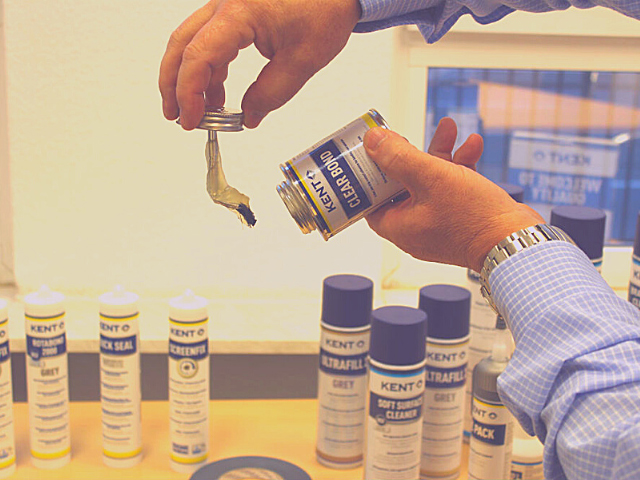If you’re looking to glue two different types of surfaces together, it’s worth considering whether spray adhesive or contact adhesive would be more effective.
Each method has advantages and disadvantages, so it’s essential to know how they compare to choose the best one for your project.
This article will look at some of the key differences between the two kinds of glues and tell you which method might be best suited to your needs.
It might help you decide if spray adhesive or contact adhesive would work better for you next time you want to glue something together!
Read More: How To Use Spray Adhesive on Paper?
What Are Spray Adhesives?
Sprays are some of the best adhesives on today’s market since they can be applied quickly, efficiently, and precisely. Plus, many sprays have special additives that make them even stronger than other types of glue.
The most common use for the spray is when you want to stick two fabrics together—which is why it’s an excellent choice for hemming curtains or tacking up tapestries.
However, like all glues and adhesives, spray adhesive has its pros and cons—namely, that it can be hard to work with if you don’t know what you’re doing.
Read More: 3M Spray Adhesive 90 vs. 77

Image: conro.com
What Are Contact Adhesives?
A type of adhesives designed to react with fabrics and other surfaces, contact adhesives chemically are liquid at room temperature but harden quickly when exposed to air.
When dry, contact adhesives create a strong bond that won’t crack or peel as spray glues can. Because they work similarly to paint, you can use them to dye or tint fabric.
Although contact adhesive has been around for decades, it’s not suitable for projects that require color matching because all-purpose formulas tend to darken as they cure.
What’s more? Contact adhesive does contain some harmful chemicals—namely methylene chloride and formaldehyde—so follow proper precautions when working with it (i.e., use in a well-ventilated area).
Read More: What Can I Use Instead of Spray Adhesive?
Spray Adhesive vs. Contact Adhesive
How Does Each Product Compare In Terms Of Cost?
It might seem like spray adhesive is more affordable than contact adhesive at first glance, but in reality, it’s pretty comparable.
For a little over $15, you can get enough contact adhesive to glue several items together—and that means there won’t be any issues with overlapping or moving pieces on projects where you want things to stick.
On average, it will cost around $2 per ounce of contact adhesive if you buy larger quantities. Meanwhile, a 4-ounce bottle of spray adhesive will run around $5; so if you are looking to fix a few small items together rather than complete an entire project in one go, spray adhesive will be cheaper upfront.
Read More: Gorilla Spray Adhesive vs. 3M 77

How Does Each Product Compare In Terms Of Usage Time?
Spray adhesive is a quick option if you’re in a rush to stick your materials together. It’s suitable for projects like wrapping holiday gifts that don’t need to hold up under heavy use or ones that will require frequent changes.
However, since it works with moisture in its formula, it doesn’t have much-staying power and can get sticky over time. Some people also find it hard to work with spray adhesives because they get everywhere; direct contact isn’t always possible when working on larger projects.
Contact adhesive is a better choice if you’re working on a project that needs to last a while or one where changing materials isn’t an option. You’ll be able to work with it immediately, and it has excellent holding power.
The downside is that it’s messy because you need to spread glue all over your material, ensuring they’re well-covered before pressing them together. This type also has a strong odor, so be careful if you’re trying to work in close quarters!
Which Product Is Best For Your Project?
Two staple products for hobbyists are spray adhesive and contact adhesive. While both can be used to bond materials, they have a few important differences to consider before use.
For example, spray adhesive is helpful for lightweight bonding objects without leaving any residue behind, which makes it ideal for gluing flimsy paper or lightweight plastic; however, you’ll need to do an even coat on both surfaces to get good results.
On the other hand, contact adhesive leaves a strong hold on whatever it’s applied.
Read More: Contact Cement vs. Contact Adhesive
What are spray adhesives best used for?
For heavier applications, it may be better to opt for contact adhesive. Remember to always read all labels carefully before applying any adhesives. The last thing you want is for your project to fall apart mid-installation!
What is an alternative for spray adhesive?
These are commonly referred to as contact adhesives since they cure when brought into contact with a surface (rather than after exposure to the air like traditional liquid adhesives).
They are ideal for use on projects that require both flexibility and durability (i.e., items that may be handled or moved around) and those made from multiple materials.
However, spray adhesives have drawbacks; contact adhesives can create stronger bonds in certain applications (such as paper) but may not be appropriate for every situation.
Is spray adhesive permanent?
If you remove your project before then, some adhesion may remain. However, once a surface is fully dry, most spray adhesives are permanent.
You can confirm that your spray adhesive is dry by lightly rubbing a hard plastic object across it; if you feel no stickiness or resistance when pressing your finger against the area afterward, it’s ready for use.
Last Opinion
If you’re in a rush, contact adhesive may be a good option for you. It dries faster than spray adhesive and is often available at your local hardware store.
However, some people don’t like that they need to apply pressure to bond objects together with contact adhesive. Others don’t like that it takes up space in their toolbox, as it comes in canisters instead of spray bottles.
Suppose you have an additional few minutes before bonding items together. In that case, spray glue is probably your best bet because its drying time isn’t as long as contact adhesive but still works quickly enough to be convenient.
Plus, it has a wider range of applications than contact adhesive because no pressure is required when using it!

